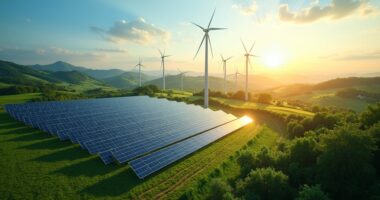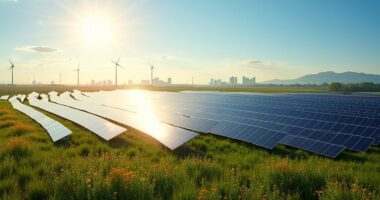In 2025, countries are making leaps in renewable energy, putting green power front and center. China remains the heavyweight champion, dominating with nearly 350 GW of new capacity. The European Union is sprinting ahead too, nearly doubling its output growth, all while the United States embraces technological innovations with a clean energy boom. It’s a race for a sustainable future, where collaboration and policy support are the secret sauce. Curious how other regions stack up? More surprises await!
Global Renewable Energy Progress in 2025
As the world gears up for 2025, the renewable energy landscape is rapidly transforming, almost like a caterpillar emerging as a vibrant butterfly—if that butterfly were powered by solar panels and wind turbines, of course.
With a staggering 585 gigawatts (GW) of new renewable capacity added globally in 2024, this metamorphosis is nothing short of impressive.
By early 2025, the total renewable power capacity reached an astonishing 4,448 GW, marking a record annual growth rate of 15.1%. Notably, renewables accounted for 92.5% of total power expansion worldwide in 2024, highlighting their crucial role in the energy transition.
Leading the charge is Asia, with China alone contributing nearly 64% of the new global capacity.
This behemoth of renewable energy has been busy, installing almost 350 GW in a single year, fueled by its ambitious 14th Five-Year Plan for Renewable Energy.
The country has become a powerhouse in wind and solar infrastructure, demonstrating just how quickly progress can be made when the right policy support is in place.
Meanwhile, the European Union is not lagging far behind, accelerating its solar and wind deployment in response to energy security needs and nearly doubling its output growth from 2021.
In the United States, new policy approaches and industry demand are setting the stage for a clean energy boom.
With data centers expected to add up to 44 GW of demand by 2030, the U.S. is embracing technological innovations and domestic supply chain growth, illustrating the country’s potential to catch up.
Recent IEA projections suggest that renewable capacity will need to more than double by 2030 to align with global climate objectives.
However, the renewable energy race isn’t without its challenges.
While Asia is basking in the sun, regions like Central America and the Caribbean are struggling to keep pace, accounting for only 3.2% of global additions in 2024.
To meet the ambitious target of tripling renewables by 2030, a broader push across all regions is essential.
As the renewable landscape evolves, it becomes clear that collaboration and innovation will be key to achieving a sustainable future.









